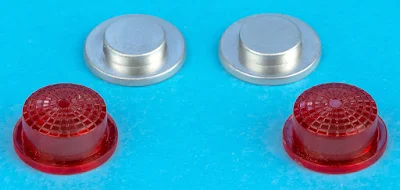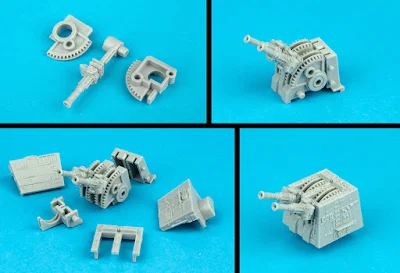Now Andy his hot little hands on the hotter and littler A-Wing Starfighter kit in 1/72nd scale, he thought he might show us how the kit goes together before he paints and weathers it. Let’s see how it all looks together in PtII of his review.

Construction Review: A-Wing Starfighter
Manufacturer - Bandai
Kit Number - 0206320
Scale - 1/72nd
Availability - “Officially” only available in Japan – look for distributors on the Bandai Website
Pt. I “In-boxed”
Pt. II Construction Review
Pt. III “Revenge of the Airbrush”
I've built a lot of Bandai's Star Wars releases since they first appeared on the market, a couple of years ago and, without fail, each one has been a pleasure to put together. They're well engineered, well detailed, are simple to construct and result in the best Star Wars models yet available.
But does the latest addition, the A-Wing, meet the high standards set by the previous releases?

Err... yes... it does. It's brilliant! But that doesn't make for much of a review, does it! So don't take my word for it. Let's put it together and you can see for yourself.
OK, first things first, this is a relatively simple kit, with only 72 parts for the A-Wing itself (there's a few more for the stand and turbolaser turret). It's snap fit and Bandai have moulded it in the correct colours, so you could easily clip it together, attach the optional stickers and have a very nice (if rather toy-like) A-Wing in an hour or two, which would look something like this (if you ignore the painted pilot).
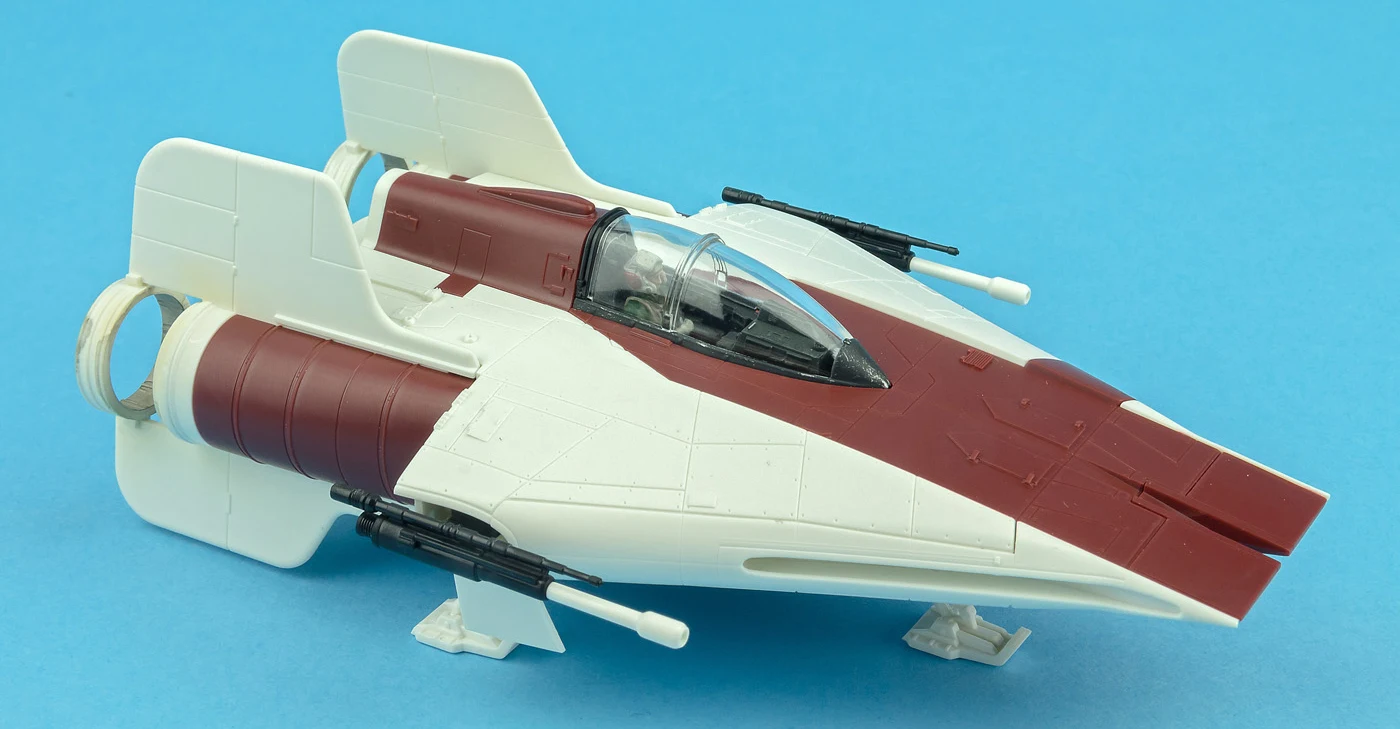
For this build, as I'm sure you're expecting, I'll be fully painting and weathering it, and that started with the cockpit and pilot. The pilot figure is very well detailed but, for me at least, painting 1/72 pilots is a small slice of hell, so here he just got a very basic paint job, using the colour guide in the instructions along with online references for the colours. The rest of the cockpit was base coated in black, followed by a dry brush in dark grey to bring out the detail. There's a decal provided for the instrument panel but, as there's some nice moulded detail, I elected to paint the instruments. Very little of this can be seen on the finished model anyway.

After the cockpit's done, the rest of the assembly speeds along. The Bandai Star Wars kits are snap fit, but use an almost Lego-style construction process with lugs and corresponding holes on the parts. These clip together very firmly and are hard to separate once attached, but the fit is near perfect. All the same, I usually add a drop of cement on the connection points, although this is more out of habit that anything.

With the two main fuselage halves together, the cockpit simply clicks into place, followed by the red centre section. Again a spot of glue was added for my own piece of mind, but really it will hold together just fine on its own.

I don't want to sound like a stuck record, but the engineering and fit of these kits really is remarkable. To give you some idea, this is the joint between the red centre section and white upper fuselage. The join is essentially invisible apart from the colour change, with the panel lines precisely lining up with each other.

These kits really do fly together. With just a handful of parts, the bulk of the main fuselage is finished. The wedge-shaped nose cone was the only part that had a less than perfect fit, even after a bit of finessing, leaving a wider panel gap than I'd have liked. I could have tried to fill it but once it was painted it actually look fine.

The engine sections are next, and they include two clear inserts that will allow you to light the engines without much difficulty, although you'll probably need to cut away some of the internal structure in the fuselage to run the wires. Since this was only a quick build, I just gave the inserts a coat of Tamiya clear red, and the two plugs that sit behind them were painted in a chrome silver.

The chrome plugs behind the red tinted inserts provide just enough reflectivity to give the engines a bit of life.

The two main engine housings come as single piece slide mouldings including the vertical stabilisers. I painted and weathered the inside of the engine nozzles before adding the tinted inserts. These were painted in the main body colour, followed by successive acrylic washes to bring out the detail.

The inserts simply push fit onto the rear of the nozzles. The red colouring isn't screen accurate, as the studio models used inset bulbs giving a warm white glow to the engines, and if I was lighting the model I'd use a warm white LED. For a non-lit model though the red helps add some contrast to the area.

The rear panel and secondary nozzles (fusion reactor exhausts, according to the Complete Vehicles guide) build up as a sub-assembly which plugs into the back of the fuselage. Since these are only push fit, the nozzles and shroud can easily be removed for painting.

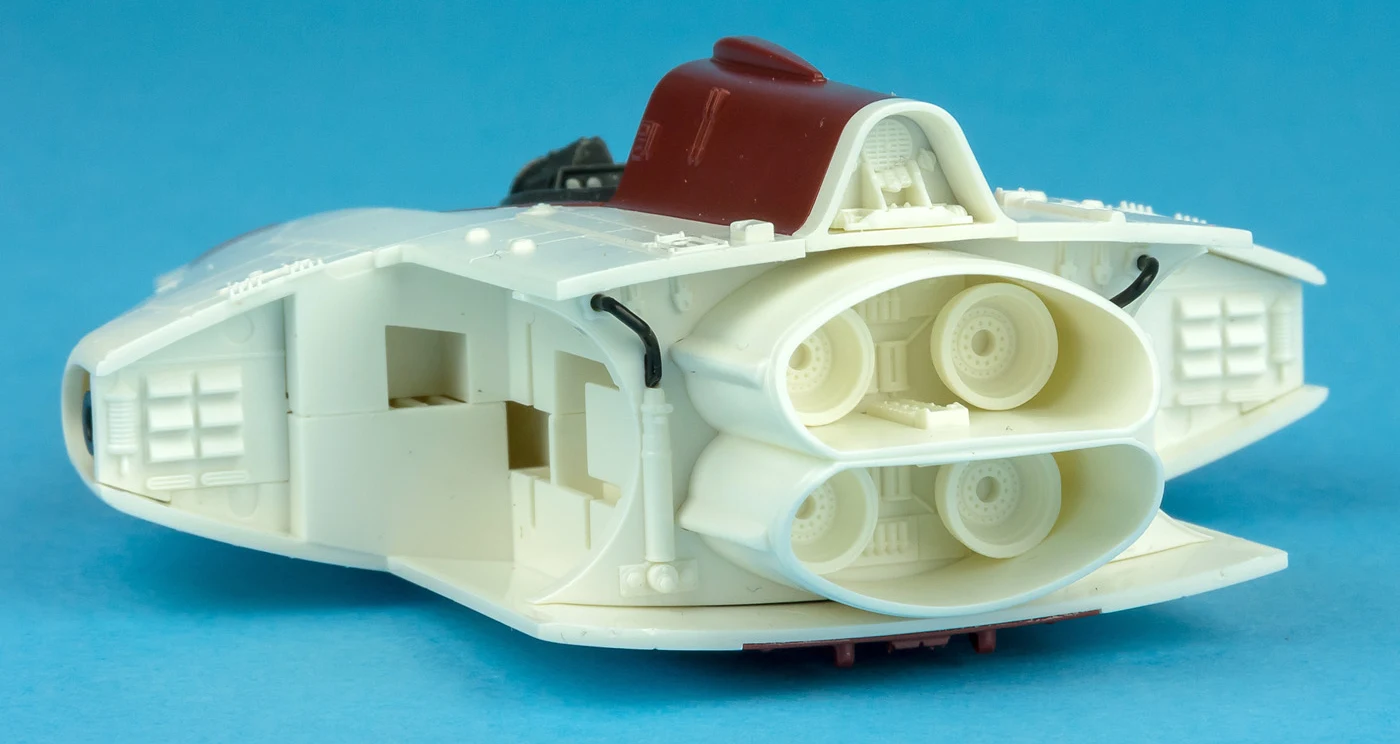
Bandai includes optional landing gear, and the kit allows you to swap between these and an in-flight mode via swappable open or closed undercarriage doors. Since the A-Wing only appeared on screen in flight, and the studio model had no landing gear, the design of these is purely fictional, but they look appropriate for the overall design (yes, I know the A-Wing is technically fictional too).

Bandai have included a choice of two cockpit canopies. Both are identical in shape, but one has the single central frame moulded in place, while the other has a groove into which a separate frame section is clipped. The latter is supplied for anyone who doesn't intend to paint the model.

You could of course, paint the separate frame to avoid masking and spraying the single piece canopy. I did find however that the separate frame didn't quite reach the cockpit surround when clipped in place. The gap was tiny, but the single piece canopy gave a flusher fit, so this is the one I went with.


If you go for the in-flight configuration, Bandai includes a flight stand which uses a section of Death Star surface as its base. This is beautifully detailed to match the actual tile sections used for filming and is designed to be a modular base, which will clip to the base plates included with many of Bandai's other releases.

The top of the stand incorporates a multi-positionable connector which simply plugs into the bottom of the A-Wing, and will allow the model to be displayed in anything from straight, level flight to a full banking turn.

In addition to the main kit, Bandai has included a Death Star Turbolaser turret as an added bonus. This is built up in the same way as the A-Wing, using push fit lugs to connect the parts. The main tower section is constructed from four individual sides which slot together. This section then drops onto a single piece base which is the same size as the base on the flight stand, and the two can be connected by a supplied clip.

The turret itself is highly detailed and is built up around the two turbolaser barrels to which the outer panels attach. The barrels remain fully poseable after construction.

The end result is a great representation of one of the Death Star's turbolasers. Some people have moaned a bit online that it isn't to the same scale as the A-Wing but I don't really see that as an issue. A 1/72 turret would be huge, and not a practical inclusion with a small size model like the A-Wing. To me, it's a nice addition which can be displayed as a model in its own right. If I have one complaint it's that the panel lines on the tower are a bit too pronounced compared to the very delicate detailing on the turret, but it doesn't detract too much from the finished model.
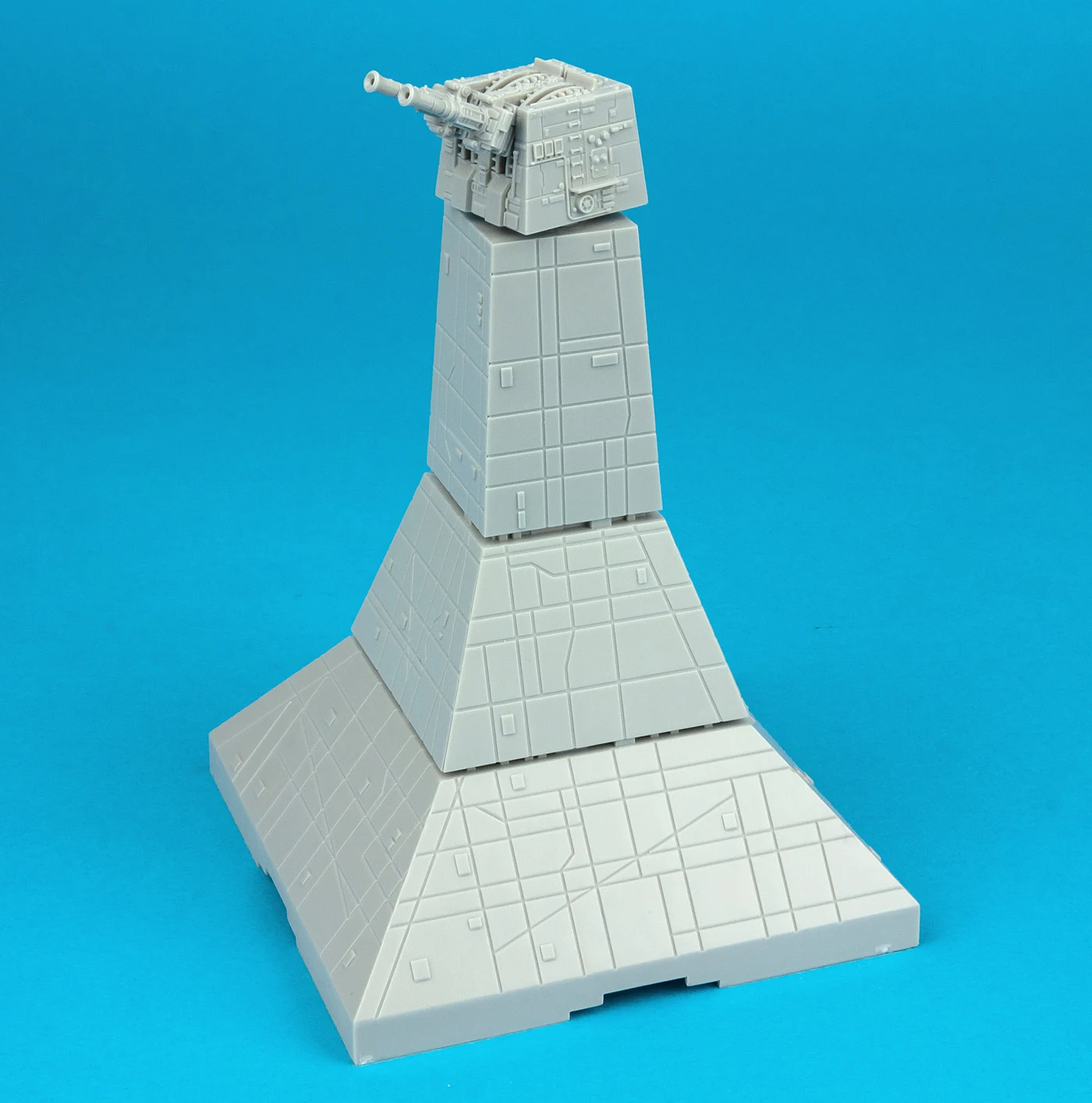
So that brings the construction phase to an end. You could, of course, choose to leave it like this, since Bandai have moulded it in the correct colours and, as such, it's a great way for kids to get into the hobby without having to worry about paint and waterslide decals. Needless to say, I'll be painting mine but, before we get on to that in part 3, I'll leave you with some shots of the built up kit.


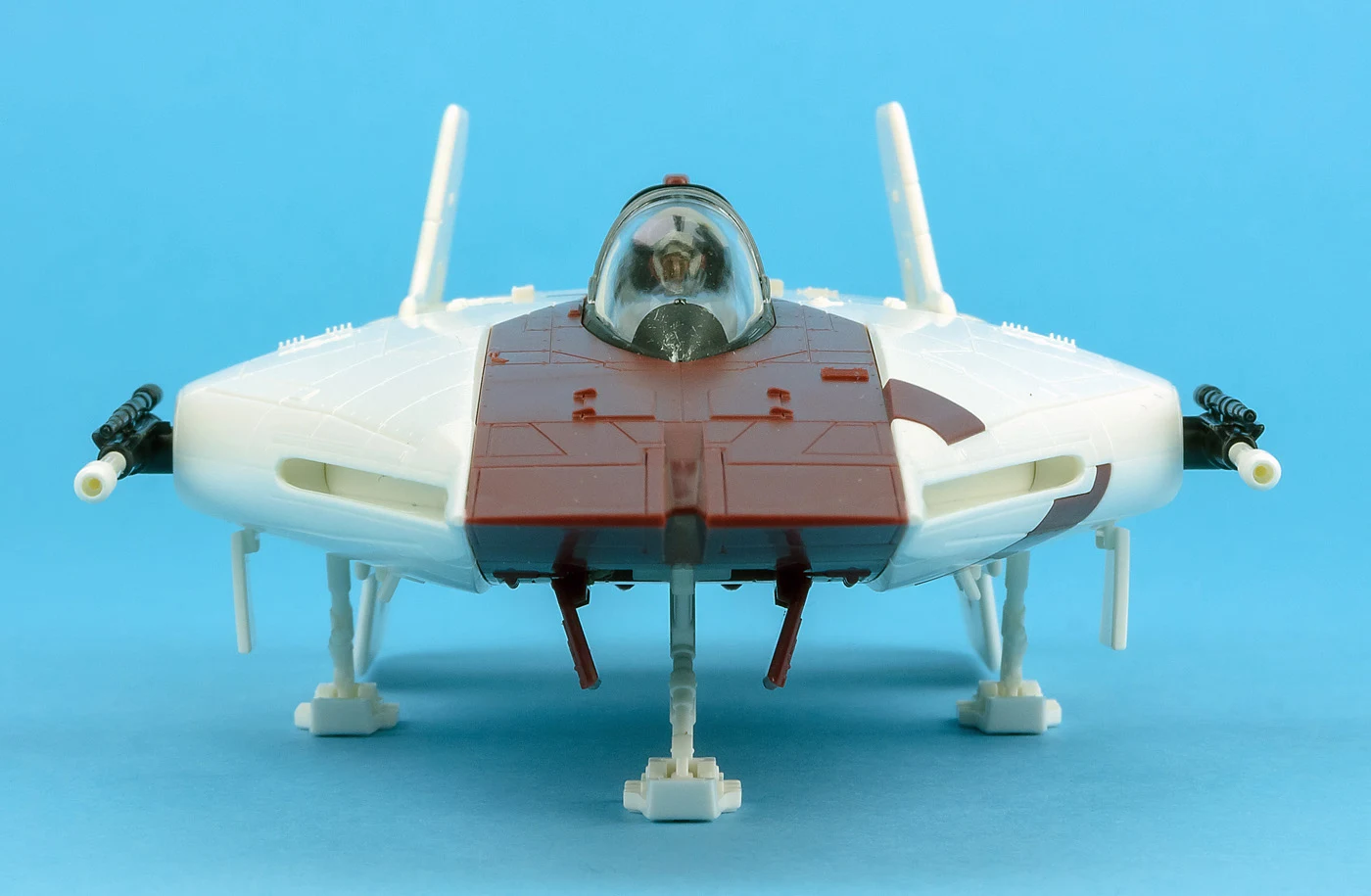


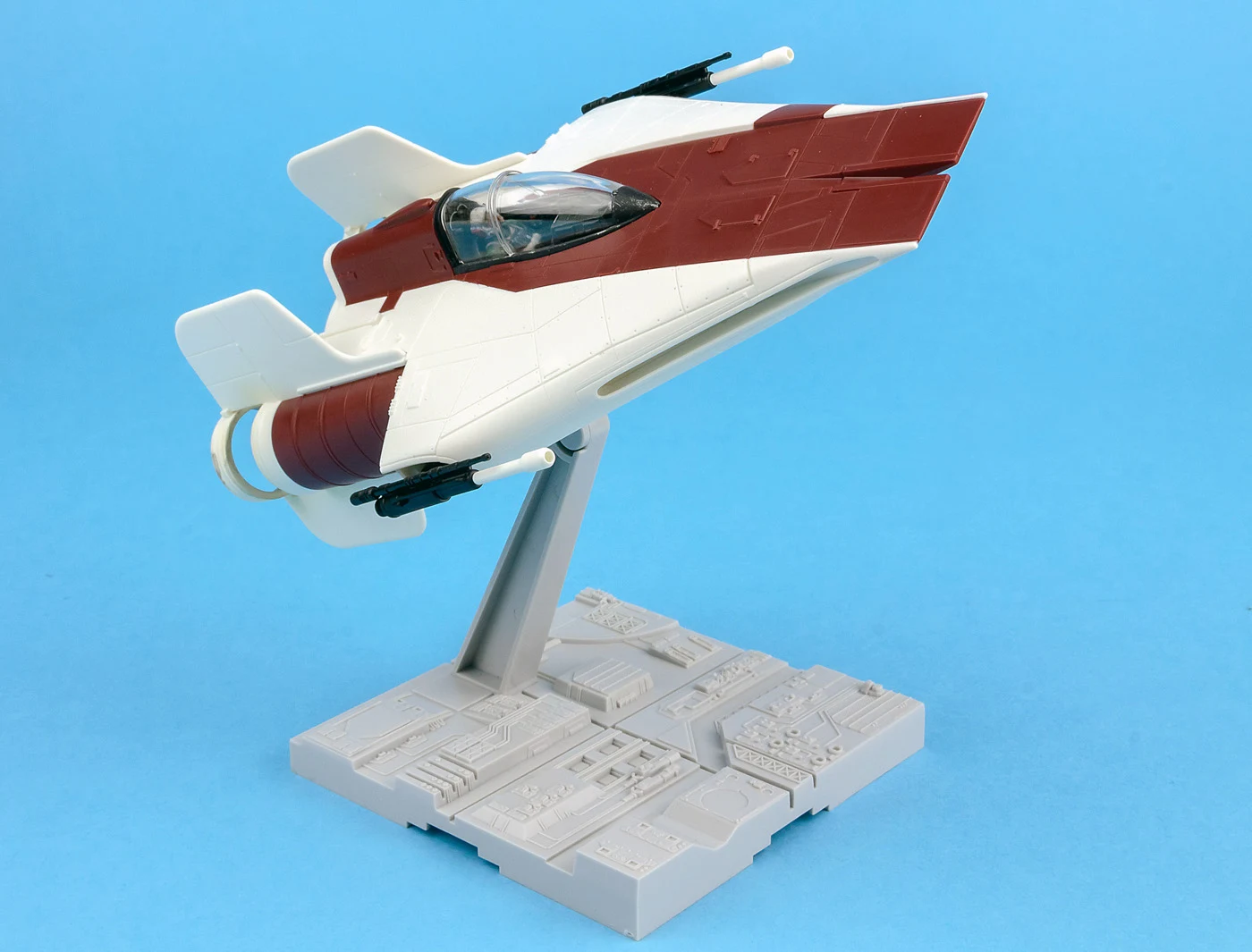
Stay tuned for Episode III Revenge of the Airbrush, coming to a screen near you soon!
Andy Moore
Pt. I “In-boxed”
Pt. II Construction Review
To see more of Bandai’s kits, take a look at their Website…


